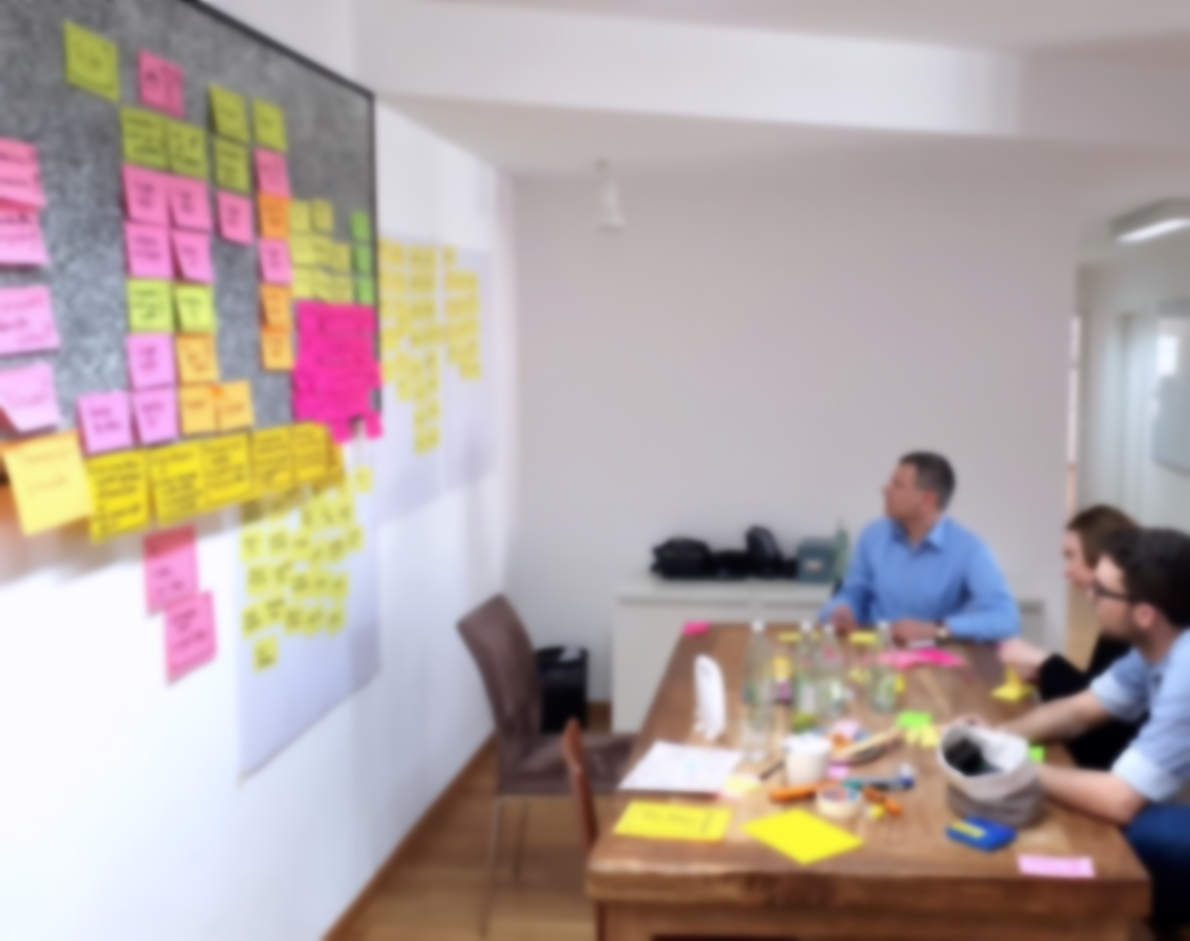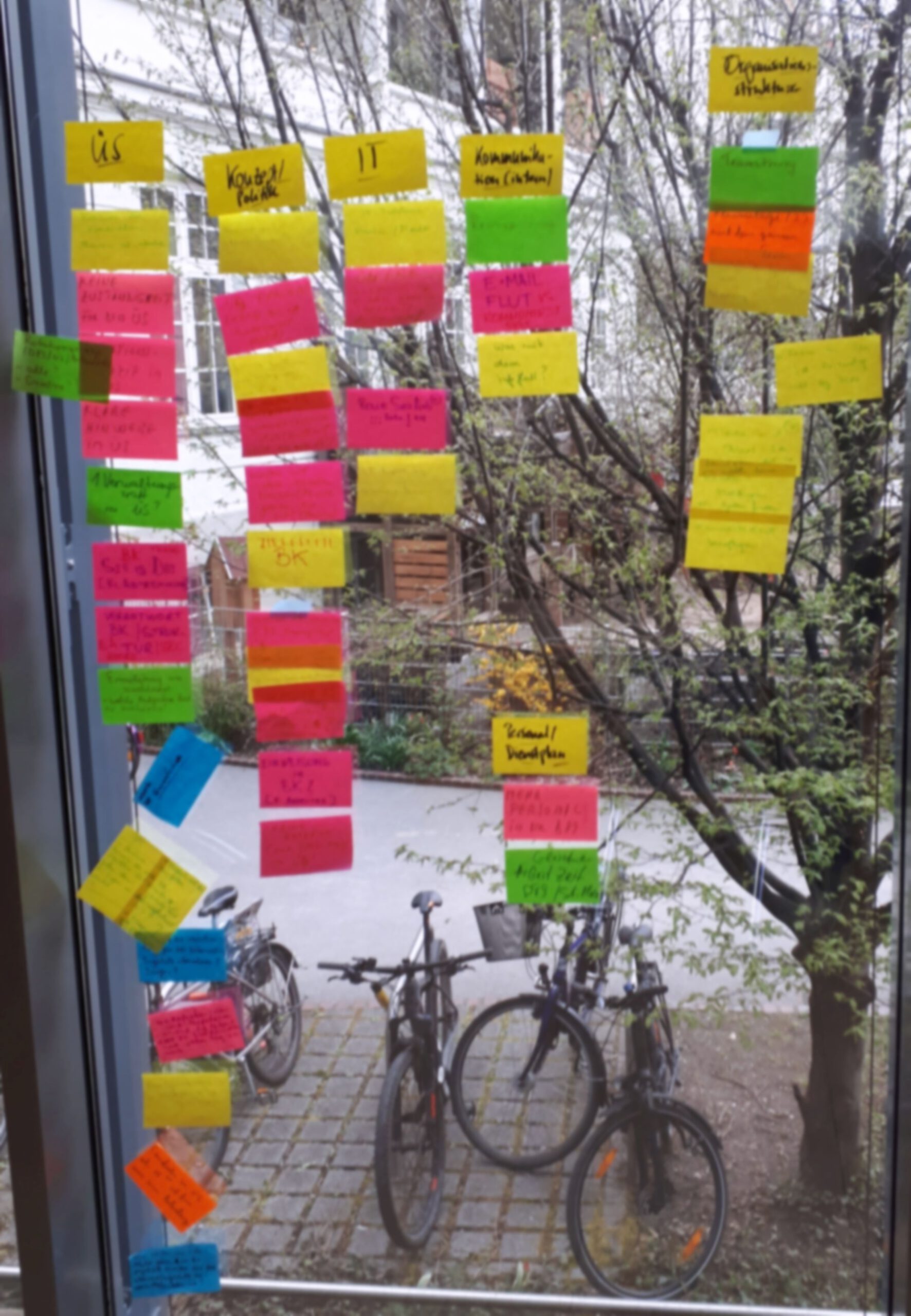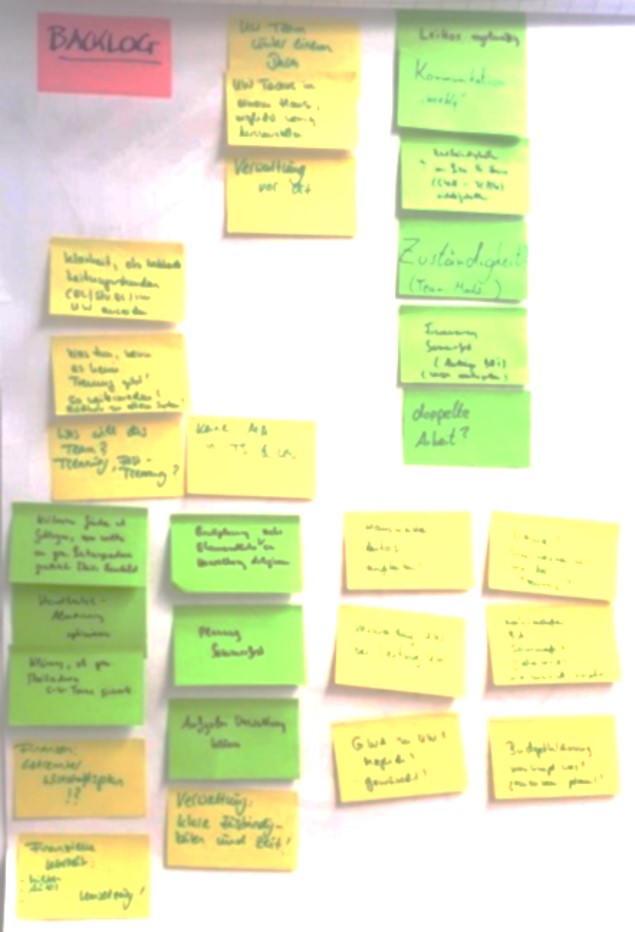All those colorful sticky notes on the wall and window – what’s the point again?
1. They are practical. And professional.
Yes, well, moderation cards do the trick, of course. But they can’t be put on walls, windows, chairs and cabinets in the same very easy yet fixing way and then also rearranged, sorted etc. in the heated debate.
But that’s exactly the point. Post-Its are an essential professional tool for teamwork

2. They help to have good, more purposeful conversations, bring together different perspectives and find good solutions.
Each member contributes their own experiences, perspectives, and know-how. To get more out of a team than just the sum of its parts (if any), organize the collaboration to integrate all that expertise.
How? Of course, first by having the team members talk to each other. That is, in – ideally well-moderated – conversations in which team members exchange thoughts and ideas on a topic in a focused way.
If, during these discussions, the important points are noted down, this will help to name and describe the facts in concrete terms. In this way – and this is already the whole trick, albeit a very effective one – they are given a shape and a form that can be seen by all those involved in the conversation.
This shape can now be clarified, changed, adapted in the further conversation. E.g. by asking questions: “What do you mean by…”, “Are we talking about the same thing…?”, “Another aspect is more important for me…”.
These discussions and conversations ensure that the team integrates opinions and views, separates the unimportant from the important and – with all, perhaps even conflictual disagreements that this entails – finds a common ground
Here, the little colorful sticky notes show why they are such a superior team tool.
Because the rule applies: Only what is visible can be managed
And that’s what Post-Its do. They make visible what needs to be managed. And they help by the following discussions that they are indeed managed.

3. The spoken word evaporates. Written remains.
Clearly, this is a matter of discipline. But overall, it is at least comparatively likely that items that are noted down and posted on the wall for anyone and everyone to see will actually be discussed, prioritized, and brought to a decision – even if only temporarily (“We’ll discuss that next time.”).
That is the big big BIG difference to the stuff that is just said, which runs the risk of being forgotten very VERY easily or – even more likely – pushed into the background by other, seemingly more important topics of discussion.
Which brings me to my next point:
4. Discussions and conversations are getting better.
And that’s because it allows important points to be submitted for discussion that might not even have a chance of being mentioned without visualization, i.e. in a purely conversational session.
By asking for and fixing even spontaneous points or thoughts on Post-Its, the input of everyone in the group can be asked for and given to the group. Even those quieter, more introverted experts in the team, who are often overshadowed by the opinion-leading alpha personnel.
In addition, conversations inevitably become more goal-oriented. Because the circle is constantly presented with a question that is literally in front of their eyes: What do we actually do with what we have collected on the wall?

5. They help you focus on what’s important: Doing.
Conversations are, of course, good and important. Because that’s how we exchange opinions, thoughts and positions, and explore the best joint path. With this communicative act, we create what is commonly called organization. This is – as I said – undoubtedly very important and good.
Despite this, it makes sense to keep reminding ourselves that conversations, meetings and agreements are generally just means to an entrepreneurial purpose.
This purpose is called: Make good decisions in order to quickly produce satisfying and value-adding results. So the primary task of teams is to separate the important from the unimportant based on the accumulated experience and expertise.
No matter how you design visualization (preferably haptic, not electronic), it will help you and your team exactly not only to make good decisions and produce good results. Much more, you will succeed ONLY with visualization.
Have fun visualizing! Because that’s what work is about, too! 🙂